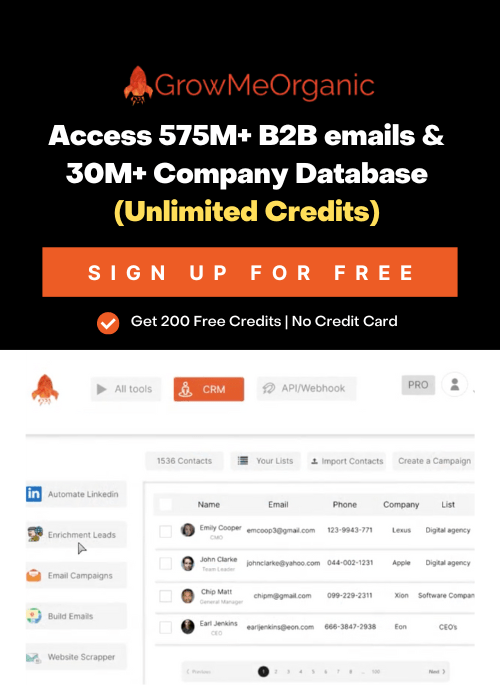In any situation, striking up a conversation with a stranger can seem intimidating and awkward–especially when it’s to achieve a financial goal. Any form of cold sales outreach is exhausting and ineffective when not done correctly—and this isn’t confined to face-to-face meetings or phone calls. I am talking about emails here, too.
Cold emailing that converts well and brings results can be difficult, so you may want to gain a better understanding of how to do it right.
In this article, we’ll learn what cold emailing is, how it works, and how it compares to its verbal counterpart, cold calling.
Cold Emailing
The term “cold emailing” refers to unsolicited emails sent to prospects by a party, usually a sales representative. It’s essentially the equivalent of cold calling via email. It’s quite common for companies to use cold emails, but just how effective are they? You may very well have some in your inbox – some unopened, gathering dust.
How effective is cold emailing?
It can certainly work, but it will depend on your campaign strategy and how effectively you structure your email content.
Cold emails have a place in a lot of businesses’ sales processes. However, it isn’t necessarily an effective outreach method for you – cold emails often don’t convert. The prospect is likely to ignore a random email from someone they’ve never met. In a way, cold emailing is similar to cold calling in which people tend to hang up before the representative has a real chance to convey his or her message.
You need to consider a few points and elements when sending cold emails if you want to maximize their effectiveness.
Tricks to Adopt Before Sending Cold-Emails
If cold emails are going to consistently deliver results, they should be well-crafted and carefully targeted. Below are some tips for succeeding with cold emails.
Write the Perfect Subject Line
Prospects tend to roll their eyes at the subject lines of cold emails, and many others are discarded right away. Prospects are constantly bombarded with generic messages such as “The leading cloud-based software in hyper-local social media marketing.”
Cold email subject lines should reflect that potential customers are looking for solutions tailored to their specific needs, which means they should be direct and personalized.
You should try to summarize what you are trying to say in five to seven words. Communicate clearly what you want from an email exchange, and speak to the interests of your recipients. You might also want to include the prospect’s name to make the introduction more personal. Here’s an example:
I’m glad to have joined the ABC podcast, James
John – your source for this article on marketing trends
Explain why you’re contacting them specifically
Cold emails shouldn’t seem generic—some degree of personalization can make a big difference. The recipient mustn’t feel like he or she is just another name on a contact list. Keep them informed of how much you value them. Consequently, they will become more responsible.
Explain why you are contacting them, not just why you are reaching out. Describe your interest in them. Highlight why they are valuable to you. Describe why you value them.
For instance, if you are writing someone and asking them to appear on your podcast, include a sentence or two about why their work would resonate with your audience.
To be effective, cold emails need to be backed by solid research and crafted with a personal touch. You should convey that you engagedly did your homework.
Point to Results and Use Social Proof
When you include some social proof behind your outreach, you can give the cold email some extra oomph – having a trusted source vouch for you can help you get a response. You may be able to provide examples of peers in their industry or mutual connections who have seen positive outcomes from your solution.
You may also want to include some hard facts in your email that show how effective your product is. Even though your email copy is engaging and thoughtful, some prospects are more interested in seeing tangible benefits than your writing skills.
Be brief, simple, and Humane in Your Writing
As I mentioned earlier, personalization is the key to successful cold emails – cookie-cutter, cut-and-paste content isn’t personal. Maintain a professional, yet conversational tone. Your email must sound natural when you speak it out loud.
In addition, no one wants to read through a long essay detailing every feature, benefit, and specification your product or service offers. Your copy should be organic and conversational – which means keeping it concise.
Ensure that your email is written clearly
When you don’t know why you are writing a cold email, you can’t compose one that’s thoughtful and effective. Describe the purpose of your email. Which would be your best next step? How might your prospect act on your message?
A vague cold email with no call to action or clearly defined purpose will result in a likely confused – and likely uninterested – recipient. You should always have a purpose in mind when you send emails.
Maybe you want to set up a demo. You may need someone who has more decision-making authority to put you in touch with. Perhaps you just want a few minutes with them to better understand their needs.
Be specific in your email. The purpose of cold emails is to bring about a specific result, and if you don’t know what that result is, you won’t be able to accomplish them correctly.
Addresses a Real Problem
It takes a lot of research and preparation to get to this point – understanding your prospects’ circumstances, needs, business structure, industry, and other factors that influence why they might need your solution.
Cold emails shouldn’t contain irrelevant straw men – a made-up problem that your product or service can solve but doesn’t apply to what the prospect is facing.
Have an understanding of the situation. Identify any similarities you may have with those customers. Make the issues they are experiencing the focal point of your email by identifying what they are likely to encounter.
It’s critical here to personalize – show your understanding of their business.
About Post Author
Anant Gupta
Growth Hacker, Marketing Automation Enthusiast & Founder of GrowMeOrganic









